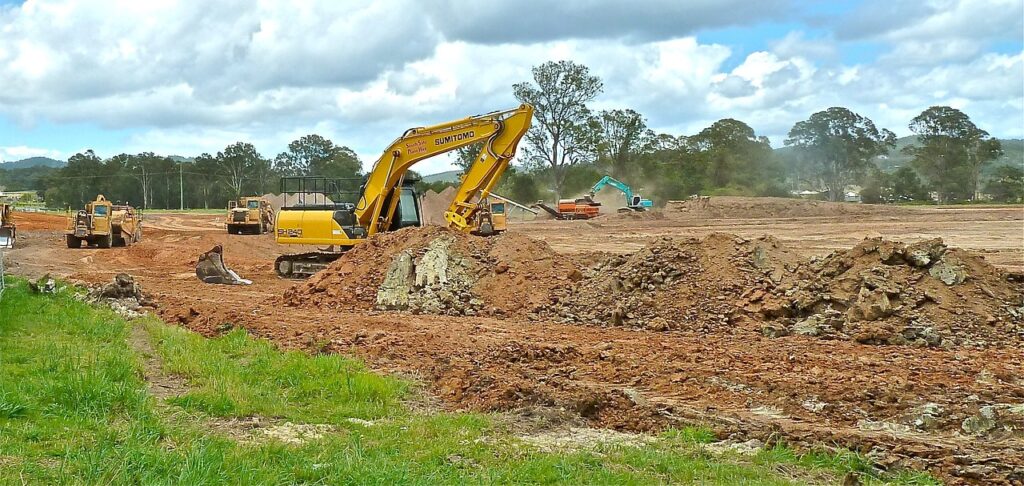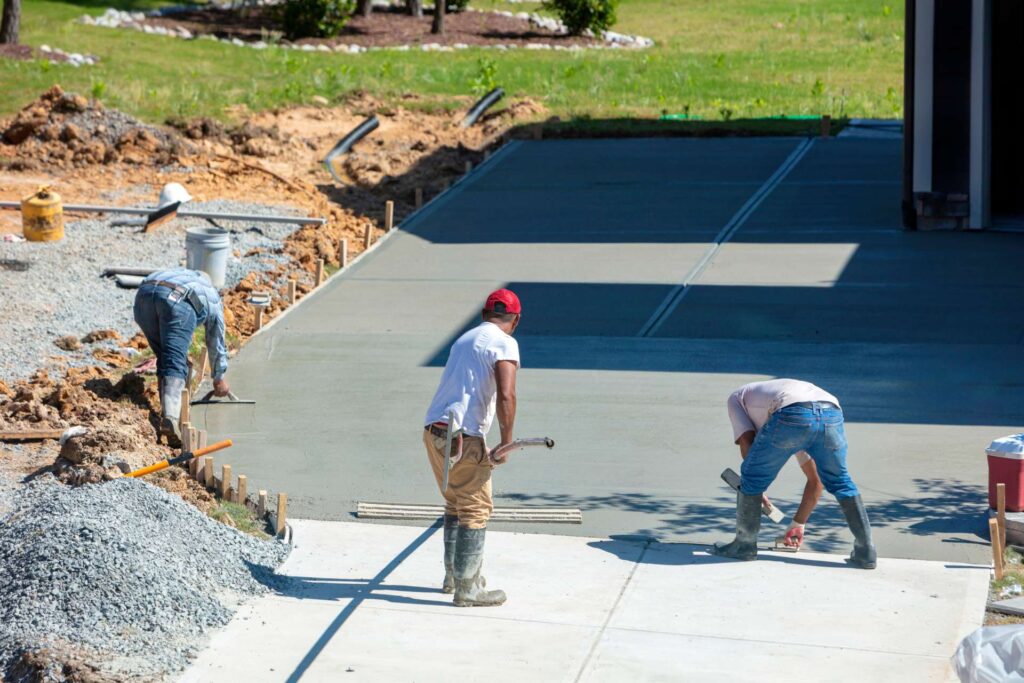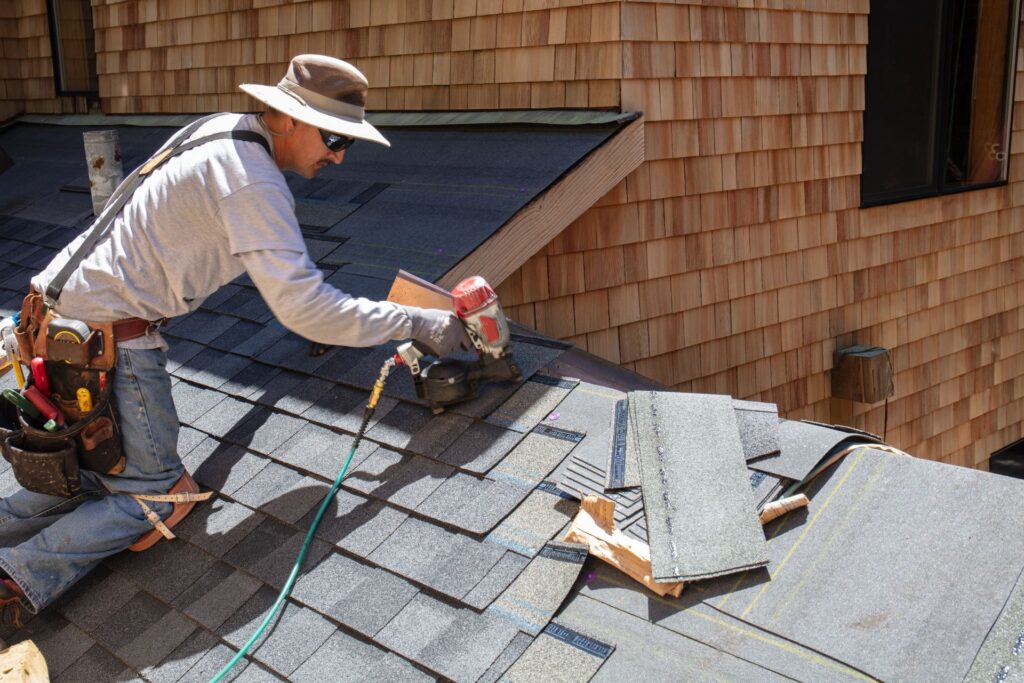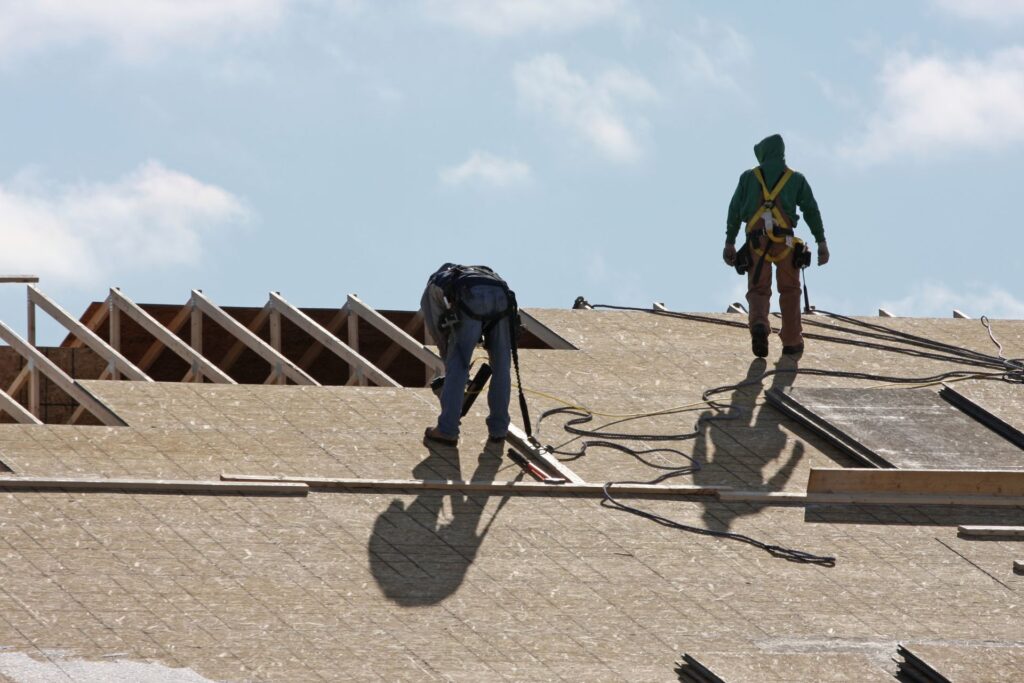The Earthworks cost in New Zealand, a crucial element underlying our construction projects, can be a mystery to many. This detailed guide aims to clarify the actual expenses involved in Earthworks in New Zealand. We will delve into the details and examine the essential part Earthworks play in construction projects. The goal of this blog is to provide you with the necessary understanding to confidently traverse the intricate financial landscape of Earthworks in NZ.
In New Zealand, the cost of earthworks varies significantly based on several factors including the size of the project, the type of soil, accessibility of the site, and the specific requirements of the job. Typically, costs can range anywhere from $30 to $120 per cubic meter, though prices can be higher for complex projects. This cost generally covers excavation, soil removal, and grading. Additional expenses may include land surveying, permits, and environmental impact assessments. It’s crucial to get a detailed quote from a qualified contractor to understand the full scope and cost of your earthworks project in New Zealand.
- Understanding Earthworks In New Zealand
- Factors Influencing Earthworks Cost
- Breakdown Of Earthworks Costs
- Additional Costs And Considerations
- Cost Estimation Techniques
- Cost-Saving Tips For Earthworks Projects
- FAQs – Ultimate Guide To Earthworks Costs In NZ
- Conclusion
- Find A Builder Connect Approved Earthworks Company Near You!
Understanding Earthworks In New Zealand
Definition And Types Of Earthworks
The craft of earthwork transcends mere dirt movement. It’s an art form that intricately combines excavation, grading, and terrain shaping to lay a solid foundation for construction projects. Picture earthwork as the initial brushstrokes on a blank canvas, setting the stage for architectural marvels to come alive.
At the heart of earthwork lies the skillful balance of cutting and filling, alongside the creation of robust embankments. Each of these processes is essential in transforming the raw, untamed ground into a meticulously crafted base, ready for the rise of impressive structures. Join us on a journey through the diverse and fascinating world of earthwork, where we delve into the various techniques that turn the soil beneath our feet into a construction masterpiece.
Significance Of Earthworks In NZ Construction Industry
In the dynamic landscape of the New Zealand construction industry, the significance of Earthworks cannot be overstated. Serving as the literal foundation for all structures, Earthworks lays the groundwork for success. From leveling terrain for residential projects to sculpting the path for roadways, these transformative activities are the unsung heroes behind every sturdy construction endeavor.
In a country where the natural terrain varies widely, Earthworks play a pivotal role in overcoming geographical challenges and ensuring the stability and longevity of construction projects. Their importance lies not only in shaping the physical landscape but also in setting the stage for the entire construction process, making them an integral and indispensable component of the construction industry in New Zealand.
Common Applications Of Earthworks Projects In NZ
In the picturesque landscapes of New Zealand, Earthworks projects play a crucial role in shaping the environment for diverse applications. From laying the groundwork for road infrastructure to sculpting the foundations of residential and commercial spaces, Earthworks projects are ubiquitous. In urban settings, Earthworks are employed for site preparation, ensuring a solid base for construction.
In rural areas, these projects facilitate agricultural developments, enhancing the productivity of the land. Furthermore, Earthworks are instrumental in environmental initiatives, such as creating water reservoirs and managing natural resources. Whether in the heart of the city or nestled in the countryside, Earthworks in NZ are the silent architects, crafting the canvas upon which the nation’s structures and ecosystems flourish.
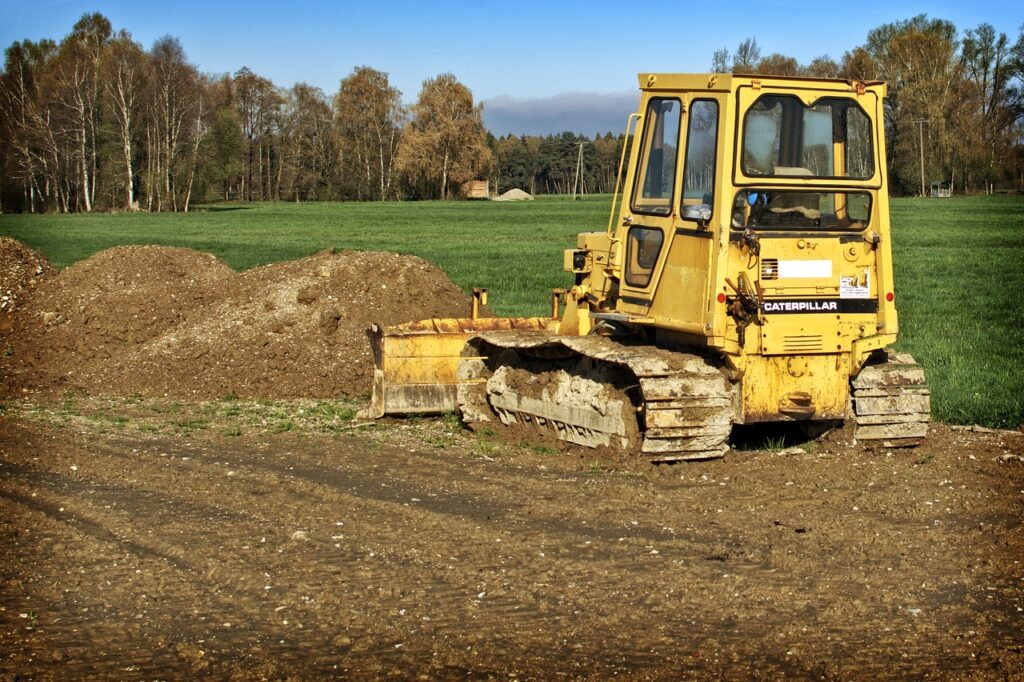
Factors Influencing Earthworks Cost
Site-Specific Factors
Site-Specific Factors: These are the unique characteristics of the land where Earthworks unfold. The geographical location sets the stage, determining soil types, conditions, and climate considerations. In essence, it’s about understanding the personality of the ground we’re working on. Geographical nuances influence the overall Earthworks cost, making each site a distinct financial puzzle.
The soil’s temperament, whether it’s rocky or sandy, heavy or loose, impacts the machinery and effort needed, consequently affecting costs. Climate considerations like rainfall and temperature play a part, in influencing work schedules and the equipment required. In navigating Earthworks, understanding the site-specific factors is like deciphering the land’s language – a crucial step toward managing costs effectively.
Project-Specific Factors
In the realm of Earthworks, “Project-Specific Factors” are the unique influencers shaping costs. From the project’s size and scope to the intricacies of the terrain, these factors play a starring role. The scale of the project, the complexity of the land it sits on, and the technology and equipment employed all contribute to the financial tapestry. Understanding these nuances is like deciphering the project’s financial DNA – a crucial step in budgeting and ensuring a successful Earthworks endeavor.
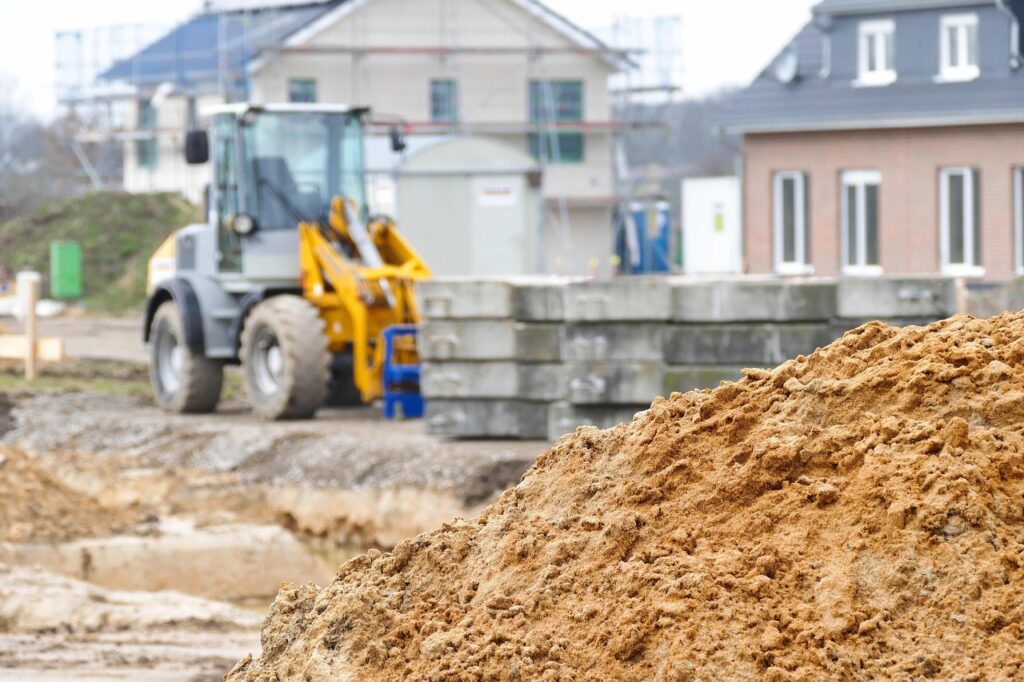
Breakdown Of Earthworks Costs
Excavation Costs
When it comes to laying the groundwork for construction projects, the costs associated with Earthworks are fundamental to consider. These costs form the backbone of your project’s initial stages and encompass a diverse range of expenses that are crucial to plan for.
Earthworks are not just about moving soil – they involve various types of excavation, each requiring specific equipment and skilled labor. Whether you’re dealing with trenching, grading, or site preparation, the type of excavation impacts the overall cost. It’s not just about the digging; the machinery used plays a significant role in both the efficiency of the task and the expense incurred.
Moreover, an often-overlooked aspect of Earthworks budgeting is the cost associated with soil disposal. Disposing of soil, especially if it’s contaminated or requires special handling, can add a surprising amount to your project’s budget. This is why understanding the nuances of soil disposal fees is crucial in avoiding unexpected expenses.
Grading And Leveling Costs
Crafting the perfect landscape for any construction project demands meticulous grading and leveling – essential steps that set the stage for a successful build. The cost of these processes can fluctuate, heavily influenced by the advanced equipment and expert labor required. It’s vital to delve into the details of these expenses to lay a solid foundation that aligns with your budget, ensuring your project stands on firm ground without stretching your finances too thin.
Earthmoving And Transportation Costs
In the world of construction, managing Earthmoving and Transportation Costs is crucial. Earthmoving is all about moving large quantities of earth in an efficient way, while transportation is key to ensuring materials get where they need to go without a hitch. These elements are vital to any construction project, as they significantly impact both the project timeline and the overall budget. By focusing on these aspects, construction projects can be executed more smoothly and cost-effectively.
Types Of Transportation Methods
Selecting the right mode of transportation is crucial in managing your operational budget. Whether you opt for the flexibility of trucks or the efficiency of conveyor belts, each choice carries distinct financial considerations. Trucks bring with them ongoing expenses such as fuel and regular maintenance. On the other hand, conveyor belts demand specific tools and skilled professionals to operate effectively. Making an informed decision in transportation can lead to substantial cost savings and improved logistics for your business.
Fuel And Maintenance Expenses
Fuel costs, often described as the driving force behind Earthmoving and Transportation, significantly impact your budget. As fuel prices surge, they directly chip away at your project’s financial health. Not far behind are maintenance expenses, which cover everything from regular vehicle maintenance to necessary repairs and comprehensive equipment servicing. Skillfully managing these expenses is key to ensuring your project remains profitable.
Regulatory Considerations
Navigating the regulatory landscape is akin to steering through a complex terrain. Permits, road restrictions, and compliance standards add layers to the financial equation. Understanding and adhering to these regulations are vital to avoid unexpected costs and delays.
In essence, Earthmoving and Transportation Costs are the logistical heartbeat of any construction project. Careful consideration of transportation methods, prudent fuel management, and adherence to regulations are pivotal for success. In this dynamic landscape, where earth meets motion, financial acumen is the compass guiding construction endeavors to completion.
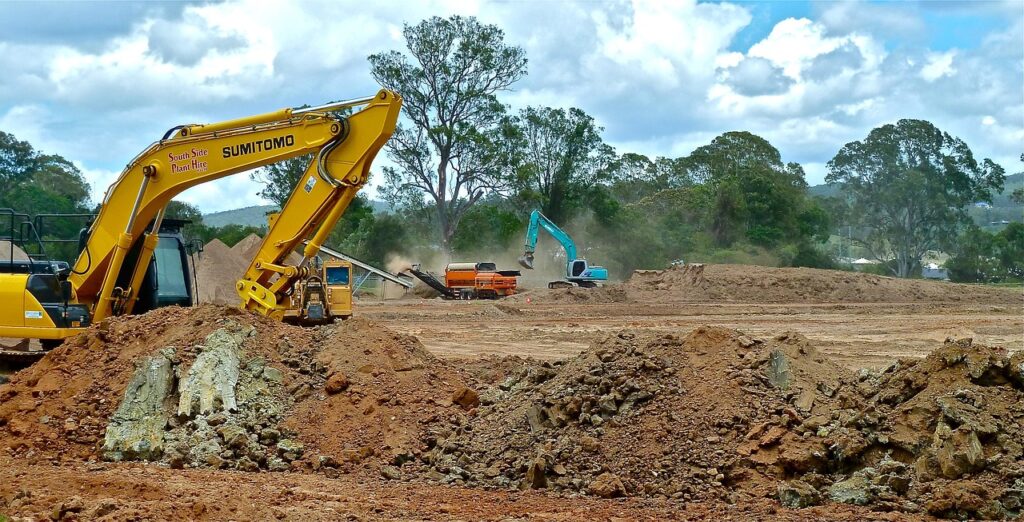
Additional Costs And Considerations
Environmental Impact Assessments
In our journey to reshape the earth, it’s crucial that we move forward with a sense of responsibility and caution. Environmental Impact Assessments (EIAs) serve as our guide in this endeavor, helping us evaluate the environmental implications of various Earthworks projects. These assessments delve into various aspects like soil health and the preservation of wildlife habitats, ensuring that our modifications to the landscape are done thoughtfully and sustainably.
Not only do EIAs help us comply with regulatory standards, but they also pave the way for eco-friendly construction practices. Join us as we explore the world of EIAs and learn how they play a pivotal role in harmonizing our developmental goals with the need for environmental conservation.
Regulatory Permits And Compliance
Navigating the bureaucratic terrain, “Regulatory Permits and Compliance” in Earthworks involves securing necessary approvals. From environmental permits to adhering to local regulations, this process ensures legal compliance. Delays and fines can arise without proper paperwork, making meticulous attention to permits an integral part of any Earthworks project.
Successful compliance not only fosters a smoother operation but also showcases commitment to environmental responsibility and community welfare. Engage with local authorities, stay informed, and pave the way for a successful and lawful Earthworks venture.
Unexpected Challenges And Contingencies
Embarking on an earthworks project comes with its unique set of challenges, some of which might catch you off guard. In this insightful piece, we delve into the financial implications that unforeseen obstacles can bring. More importantly, we highlight the crucial importance of including a contingency plan in your budget. This approach is key to building a robust financial base, ensuring that your project weathers any storm and paves the way for triumphant completion.
Value Engineering To Optimize Costs
Discover the art of smart budgeting with Value Engineering. It’s much more than just slashing costs; it’s about discovering innovative and efficient strategies to reach your project objectives. Our approach focuses on optimizing your expenses while maintaining top-notch quality. This method revolves around creative thinking and careful planning. Essentially, Value Engineering is the key to doing more with less, guaranteeing that your project remains within budget and still delivers outstanding value. Choose Value Engineering to make every dollar count!
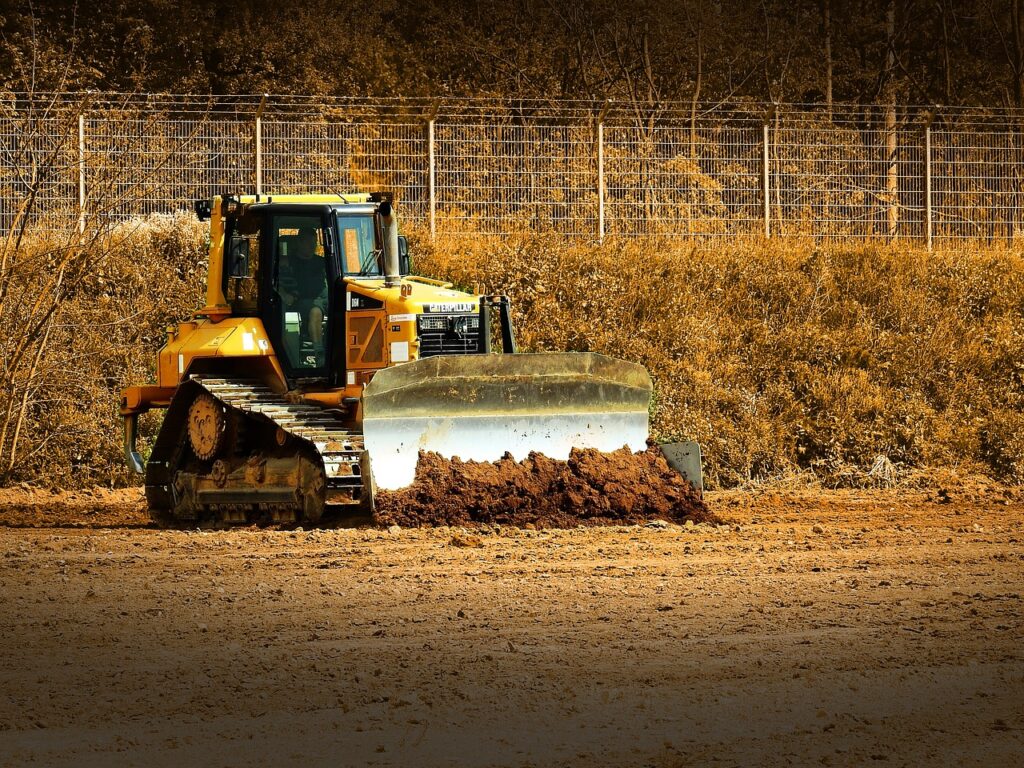
Cost Estimation Techniques
Traditional Estimation Methods
In the world of construction budgeting, tried-and-true estimation methods stand as the pillars of financial planning. These approaches, rooted deeply in years of industry know-how, leverage past project data and the keen insights of experts to predict future costs effectively. Join us as we explore the depth and reliability of these long-established techniques.
1. Historical Data As The Bedrock
Relying on time-tested methods, traditional estimation draws its strength from the foundation of historical project data. By closely examining previous projects that mirror the current undertaking, we gain essential knowledge about cost trends. This practice enables project managers to craft estimates that are both realistic and dependable, ensuring a solid footing for future success.
2. Expert Judgment – The Art Of Wisdom
In today’s data-driven landscape, the value of a human element remains unparalleled. While crunching numbers and analyzing trends is fundamental, the expertise and insight of industry veterans play a crucial role. These professionals, with years of experience under their belts, offer a depth of understanding that goes beyond mere data. Their seasoned perspective acts as a guiding light in the often unpredictable journey of cost prediction.
3. Analogous Estimating – Drawing Parallels
Drawing inspiration from tried-and-true techniques, analogous estimating bridges the gap between your new project and previous successful ventures. This method empowers project managers to assess costs with a practical lens, using past performance metrics as a reliable guide. By recognizing commonalities, this approach offers a streamlined and effective strategy for planning and budgeting.
4. Bottom-Up Estimation – Building From The Ground Up
Bottom-up estimation stands as a fundamental approach in project management. This technique dissects a project into more manageable, bite-sized parts. By evaluating each segment separately, we ensure a meticulous and precise estimation of the overall project cost. This detailed method not only boosts the accuracy of budget forecasts but also promotes transparency throughout the budgeting process.
5. Parametric Estimating – The Mathematical Art
Traditional methods don’t shy away from mathematics. Parametric estimating employs mathematical models based on project parameters. By establishing equations that relate variables to costs, this method offers a systematic and quantitative approach to estimation.
In the symphony of construction budgeting, traditional estimation methods play a melody of wisdom and practicality. These methods, refined over time, weave together historical insights, expert judgment, and mathematical precision to create a harmonious forecast of project costs.
Modern Technology In Cost Estimation
In the realm of Earthworks, embracing modern technology in cost estimation is akin to unlocking a treasure trove of precision and efficiency. Gone are the days of relying solely on traditional methods; today, we harness the power of advanced tools and digital innovations to enhance accuracy and streamline the estimation process.
Modern technology has revolutionized cost estimation by introducing cutting-edge solutions that leverage artificial intelligence, sophisticated modeling software, and real-time data analytics. These tools allow project managers and estimators to delve into intricate project details, analyze historical data, and forecast costs with unprecedented precision.
Importance Of Accurate Cost Estimates
Financial planning thrives on the foundation of accurate estimates, unlocking the door to the success of any project. The role of precise cost estimates goes beyond crucial – they are the pulsing heart of your venture. This precision guides you deftly through intricate challenges, steering your project toward a victorious path.

Cost-Saving Tips For Earthworks Projects
Efficient Project Planning
Project planning stands as the cornerstone of every successful project. It’s about skillfully transforming ideas into a well-structured plan that guarantees smooth implementation and on-schedule completion. Specifically in Earthworks, effective project planning means precise scheduling, optimal use of resources, and vigilant monitoring for any possible obstacles. This approach ensures that your project not only meets but exceeds expectations.
Sustainability Practices
In the dynamic realm of Earthworks, sustainability isn’t just a buzzword; it’s a commitment to responsible practices that harmonize construction with nature. Let’s delve into the intricate world of Sustainability Practices, where every decision resonates with eco-conscious choices, ensuring a healthier planet for us and future generations.
From material choices and energy efficiency to community engagement and long-term durability, these practices form the bedrock of a greener and more sustainable construction landscape. Join us in this journey where construction meets conscience, making each Earthworks project a testament to responsible and human-centric development.
Negotiating With Suppliers And Contractors
Negotiating with suppliers and contractors in the realm of Earthworks is a dance of collaboration, where relationships are built, and open communication serves as the foundation. The art of negotiation involves clearly defining project requirements, striving for win-win solutions, and embracing flexibility. A comprehensive cost analysis, leveraging market insights, and establishing clear contractual agreements ensure that negotiations are rooted in transparency and mutual understanding.
Beyond the initial deal, regular performance reviews foster continuous improvement, while nurturing long-term relationships with suppliers and contractors creating a network of trusted partners for future Earthworks endeavors. In this dynamic negotiation landscape, success is not measured by winners and losers but by the harmonious rhythm of collaboration, ensuring the overall success of the Earthworks project.
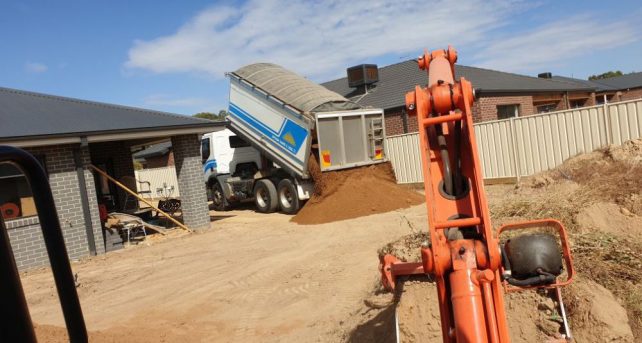
FAQs – Ultimate Guide To Earthworks Costs In NZ
Conclusion
In closing, our Ultimate Guide to Earthworks Costs in NZ endeavors to demystify the intricacies surrounding Earthworks in New Zealand, offering a comprehensive exploration of its various facets. From defining Earthworks and uncovering their significance in the Kiwi construction industry to dissecting the factors influencing costs and providing cost-saving strategies, this guide aims to empower you with the knowledge necessary to navigate the financial terrain of Earthworks projects. As we emphasize the importance of accurate cost estimates, share insights on hiring the right contractors, present inspiring case studies, and delve into budgeting essentials, we encourage you to carry this wealth of information forward. May this guide serve as a valuable resource, fostering a culture of informed decision-making for your future Earthworks endeavors.
Find A Builder Connect Approved Earthworks Company Near You!
- Christchurch Earthworks Contractors
- Civil Construction Company Auckland
- Civil Construction Company Hastings
- Civil Construction Company Hawkes Bay
- Civil Construction Company Napier
- Civil Construction Company Wellington
- Civil Engineering Earthworks Cambridge
- Digger Hire Kapiti
- Earthmoving Hamilton
- Earthmoving South Auckland
- Earthworks Hamilton
- Earthworks Kapiti
- Earthworks Mangawhai
- Earthworks Northland
- Earthworks Warkworth
- Earthworks Whangarei
- Hastings Earthmovers
- Hawkes Bay Earthmovers
- Hydro Seeding Auckland
- Hydroseeding Hamilton
- Hydroseeding Kapiti
- Hydroseeding Waikato
- Napier Earthmovers
- Siteworks Kapiti
- Tauranga Earthworks Contractors
- Wellington Earthworks Contractors
About the Author:
Mike Veail is a recognized digital marketing expert with over 6 years of experience in helping tradespeople and small businesses thrive online. A former quantity surveyor, Mike combines deep industry knowledge with hands-on expertise in SEO and Google Ads. His marketing strategies are tailored to the specific needs of the trades sector, helping businesses increase visibility and generate more leads through proven, ethical methods.
Mike has successfully partnered with numerous companies, establishing a track record of delivering measurable results. His work has been featured across various platforms that showcase his expertise in lead generation and online marketing for the trades sector.
Learn more about Mike's experience and services at https://theleadguy.online or follow him on social media:

